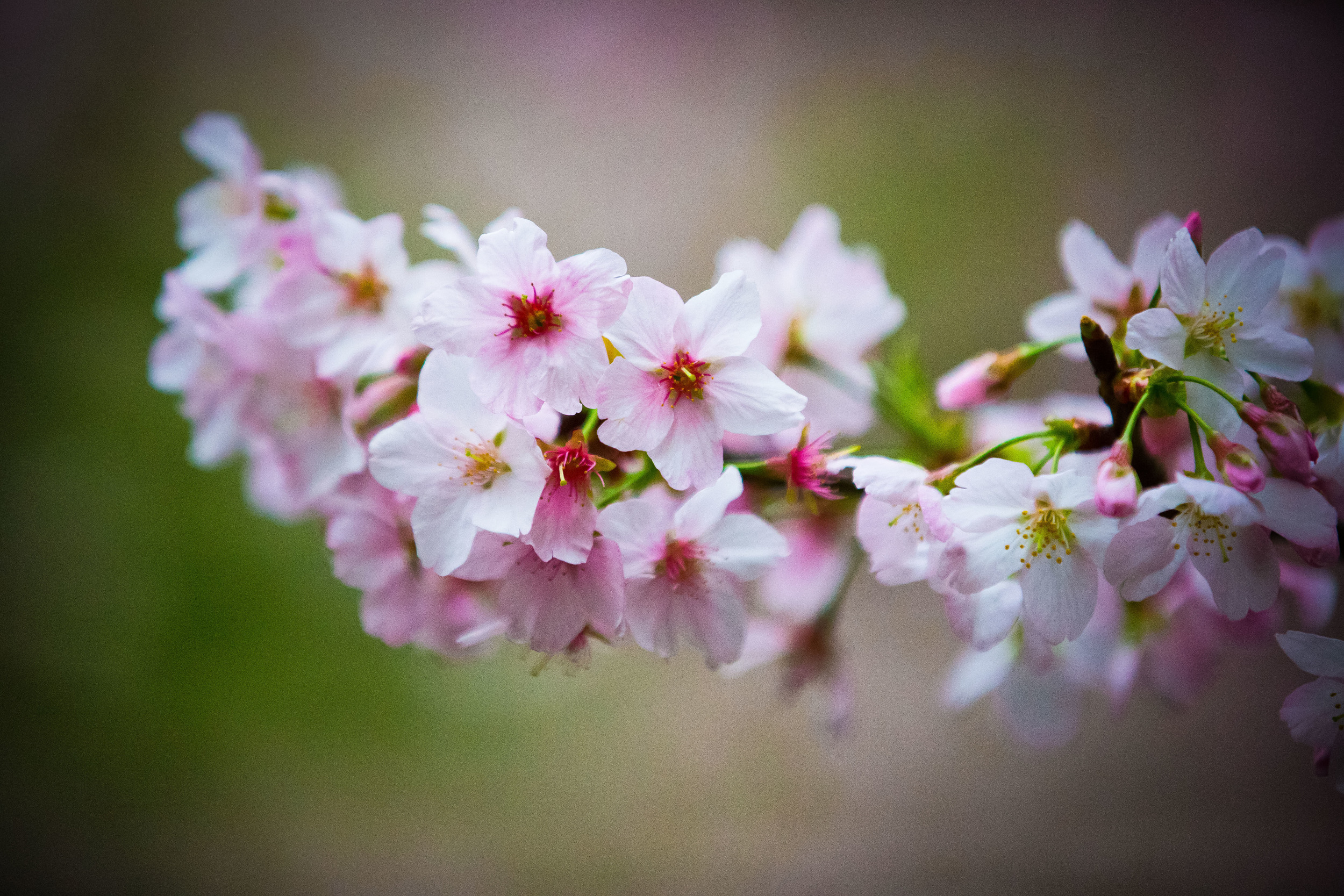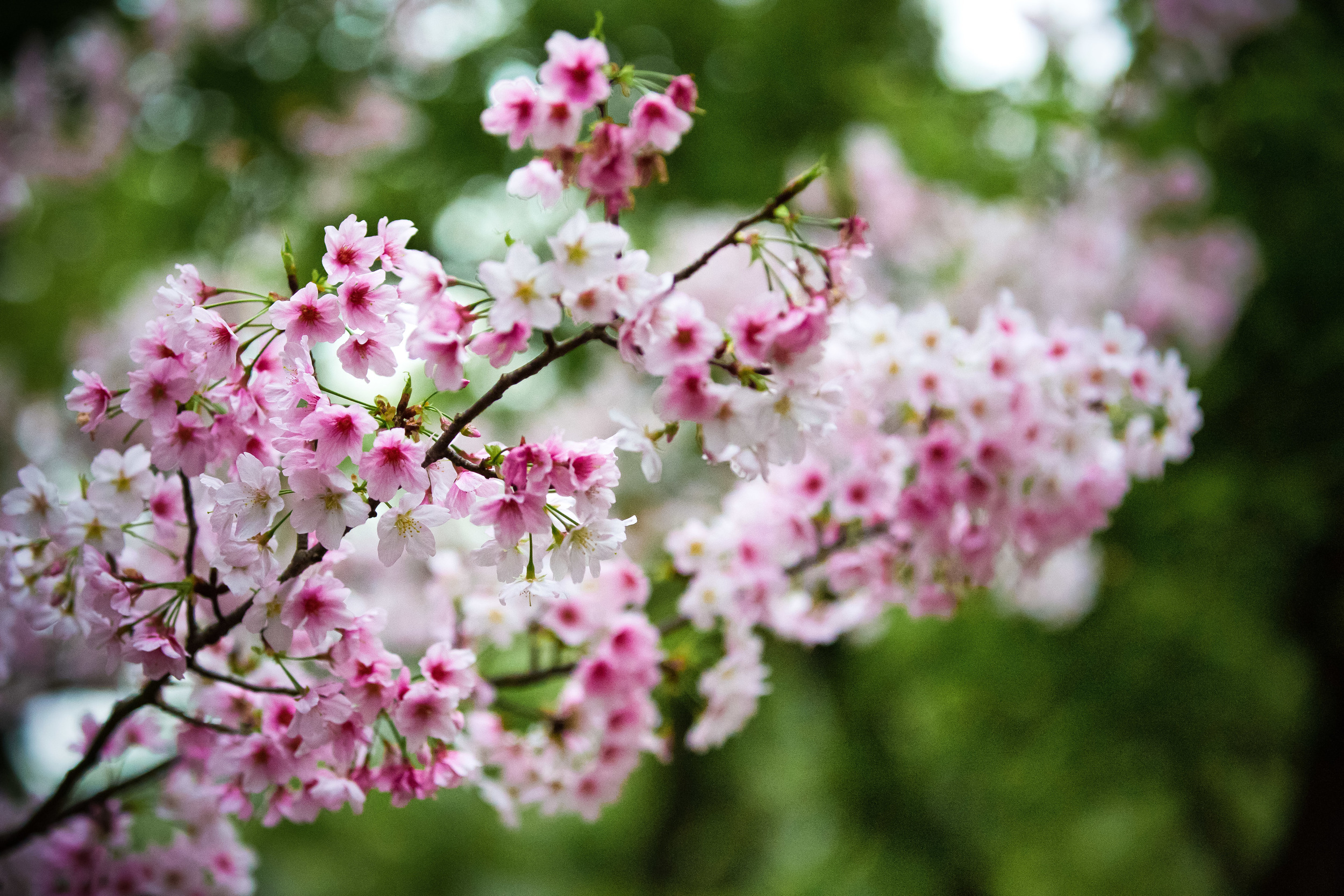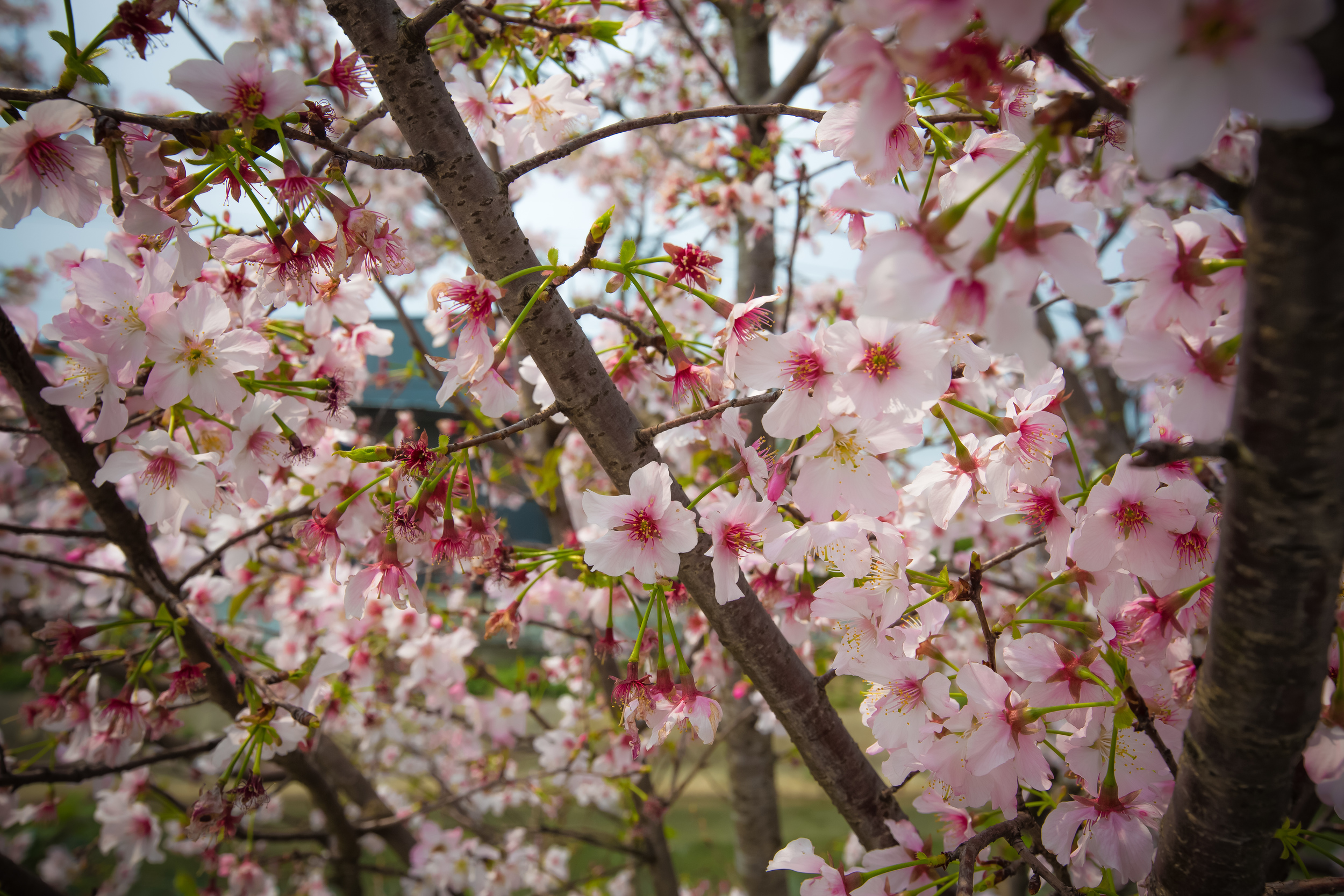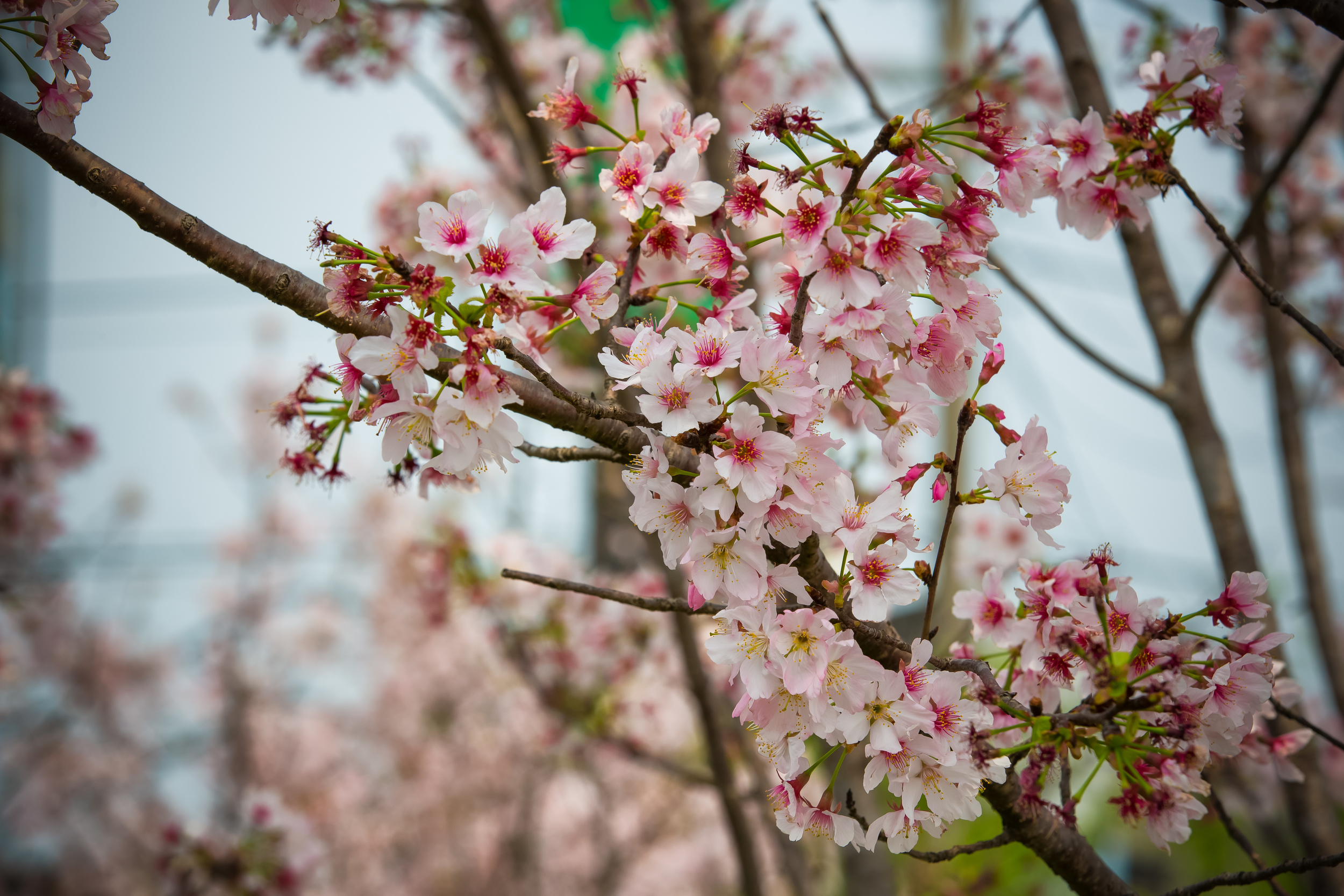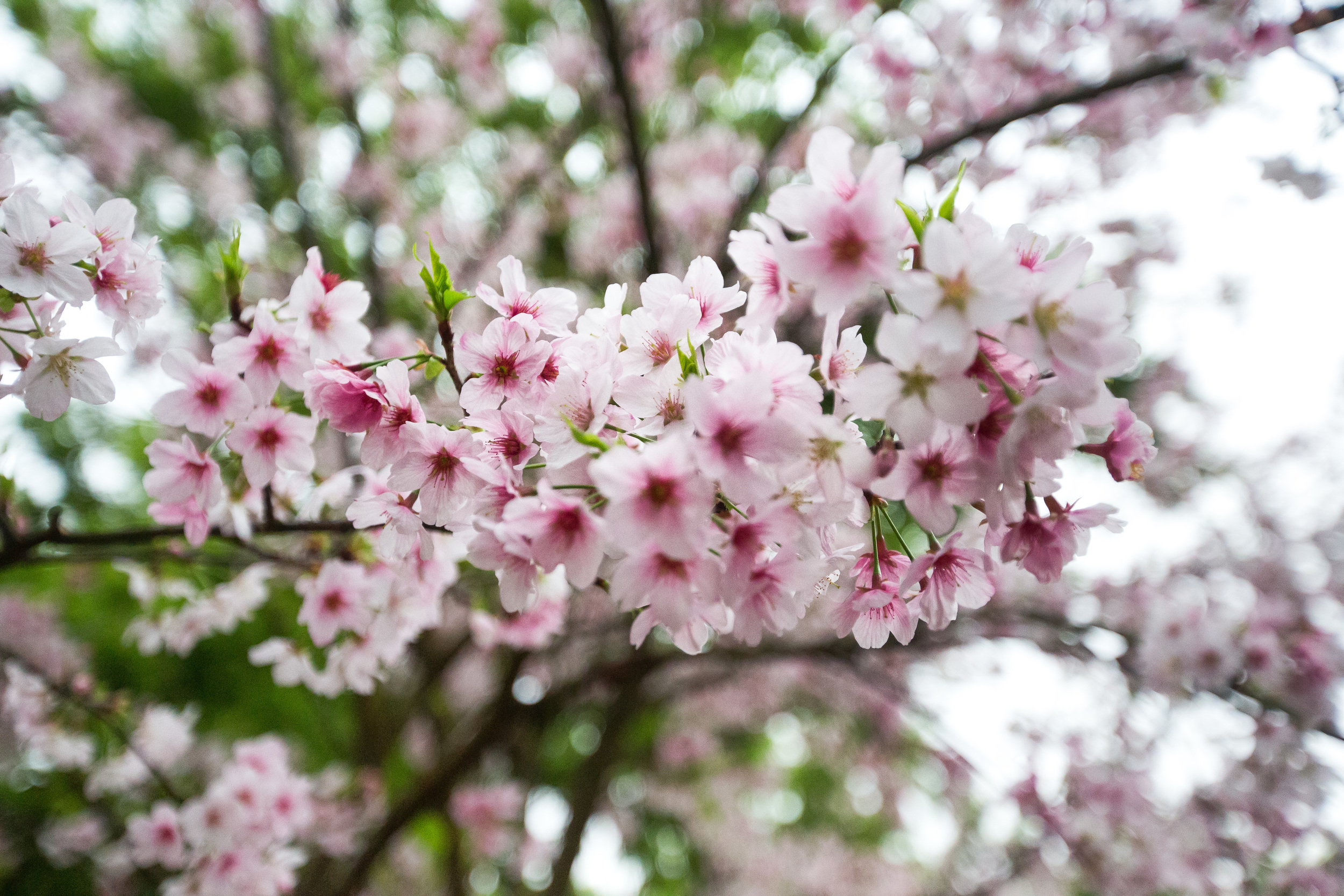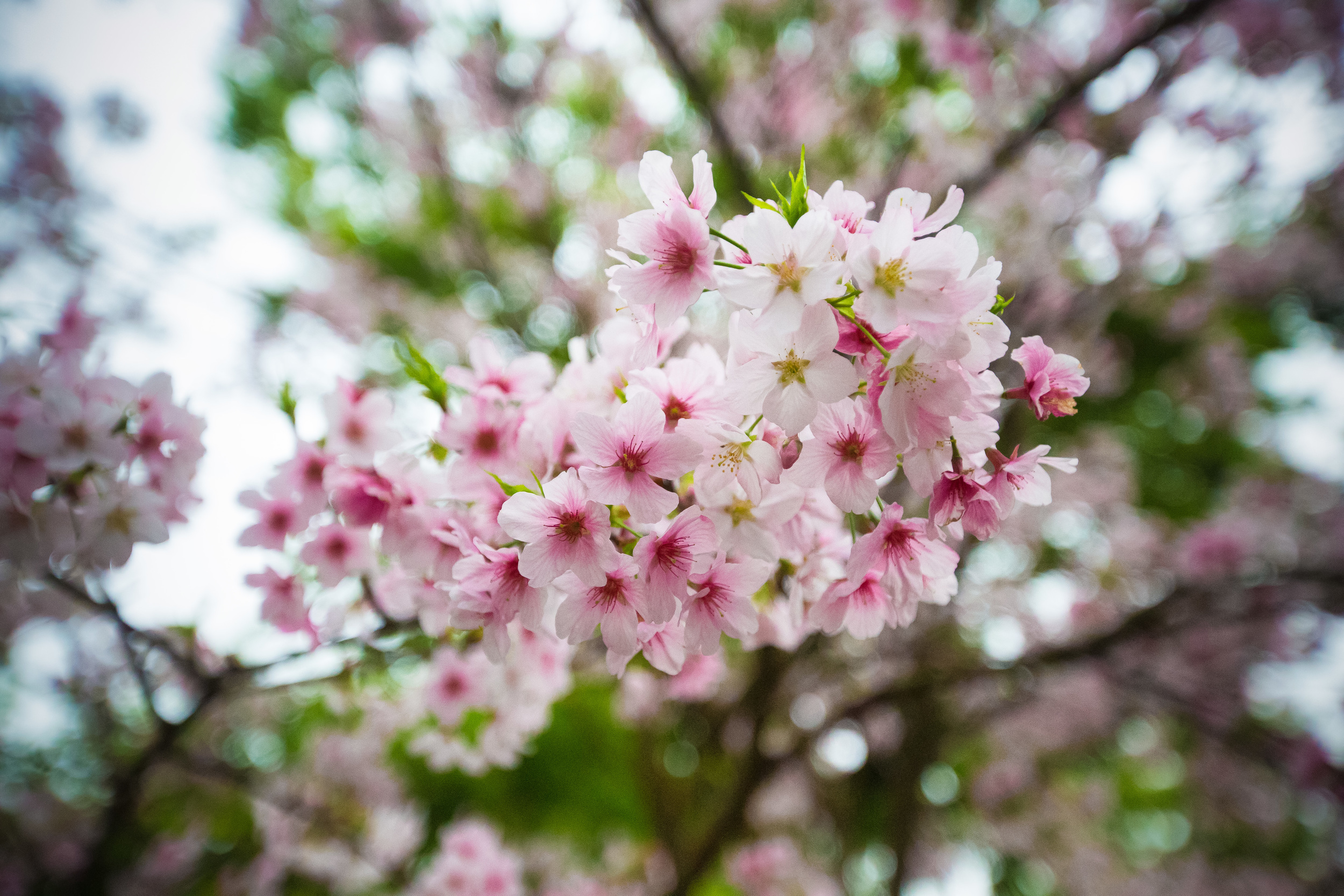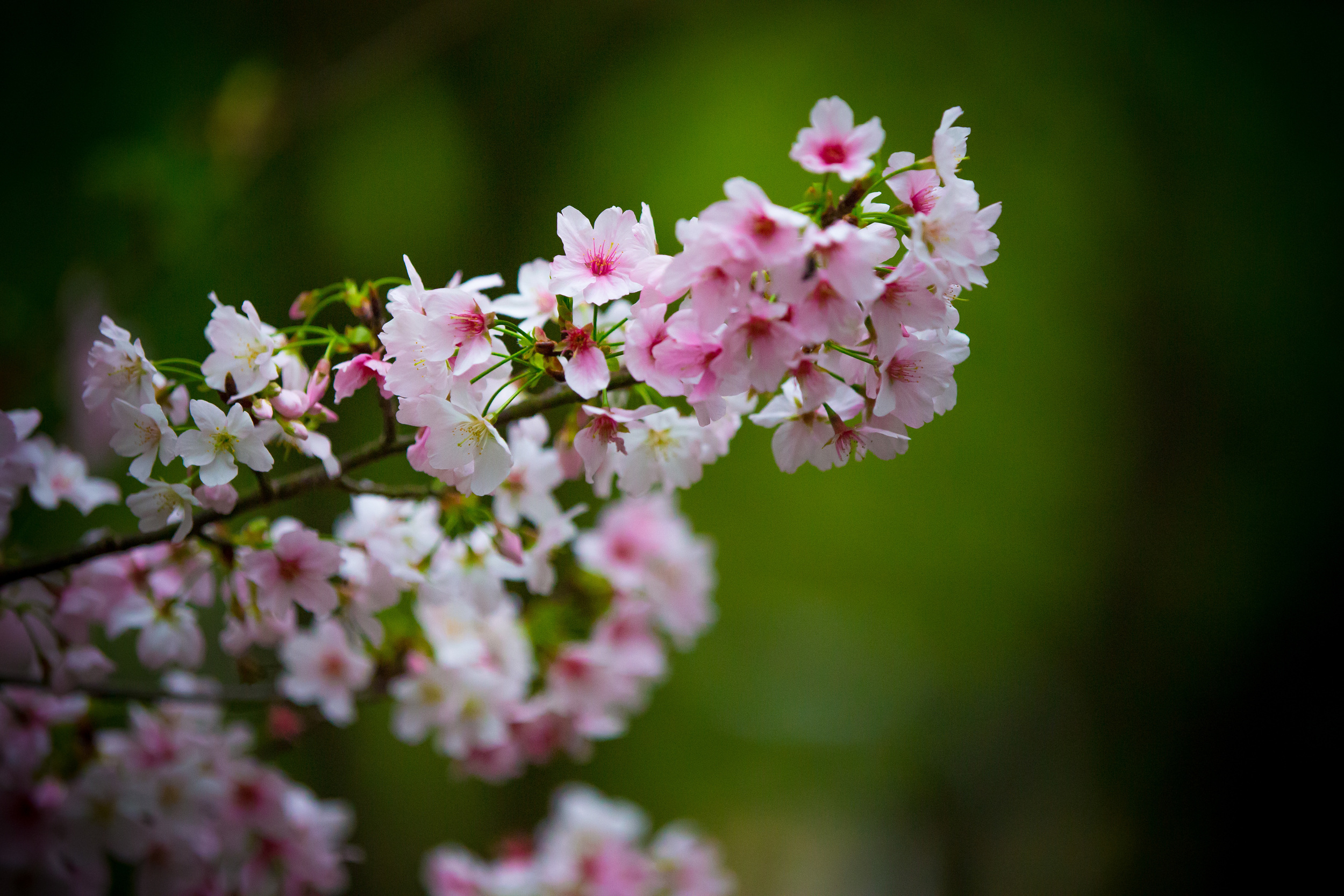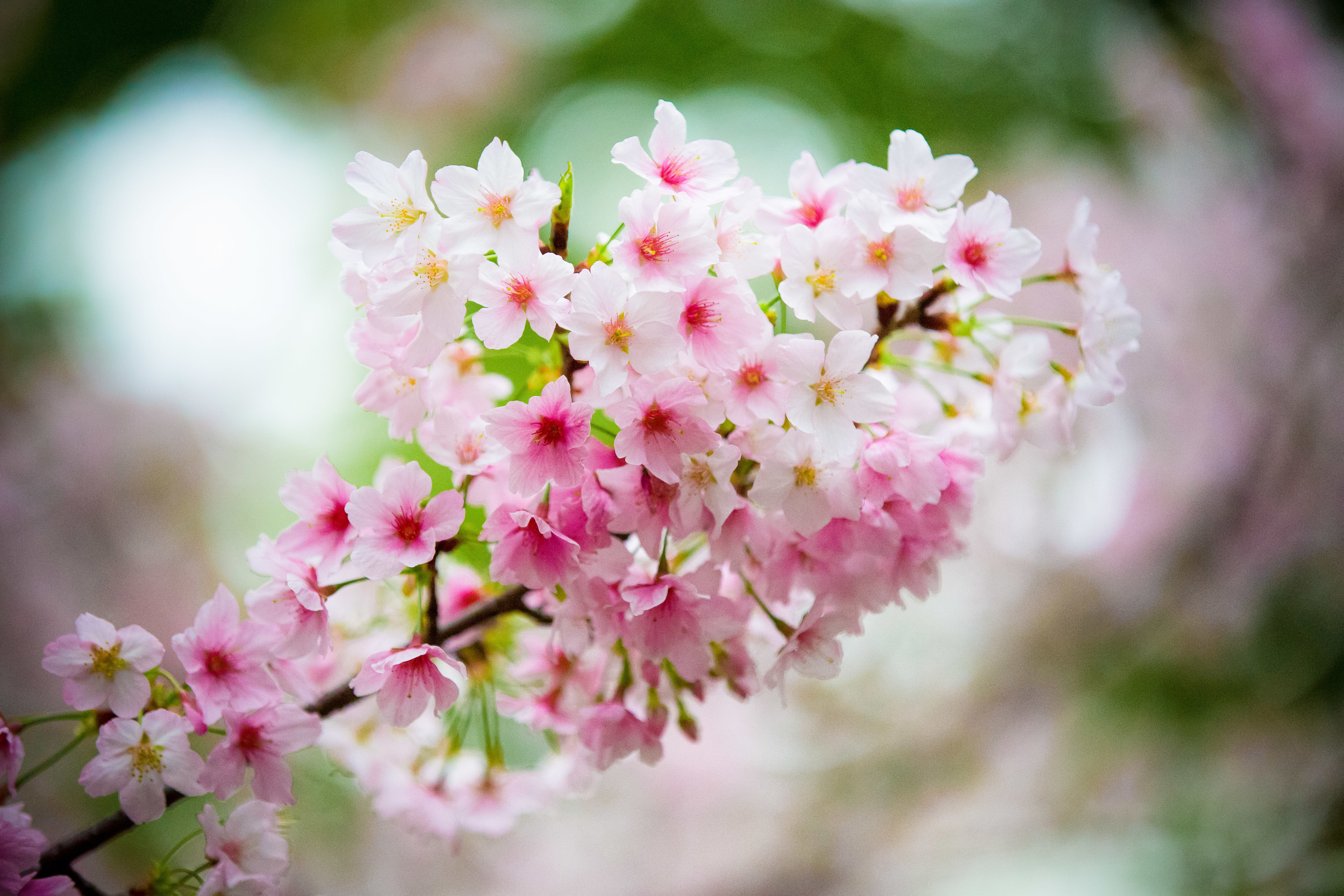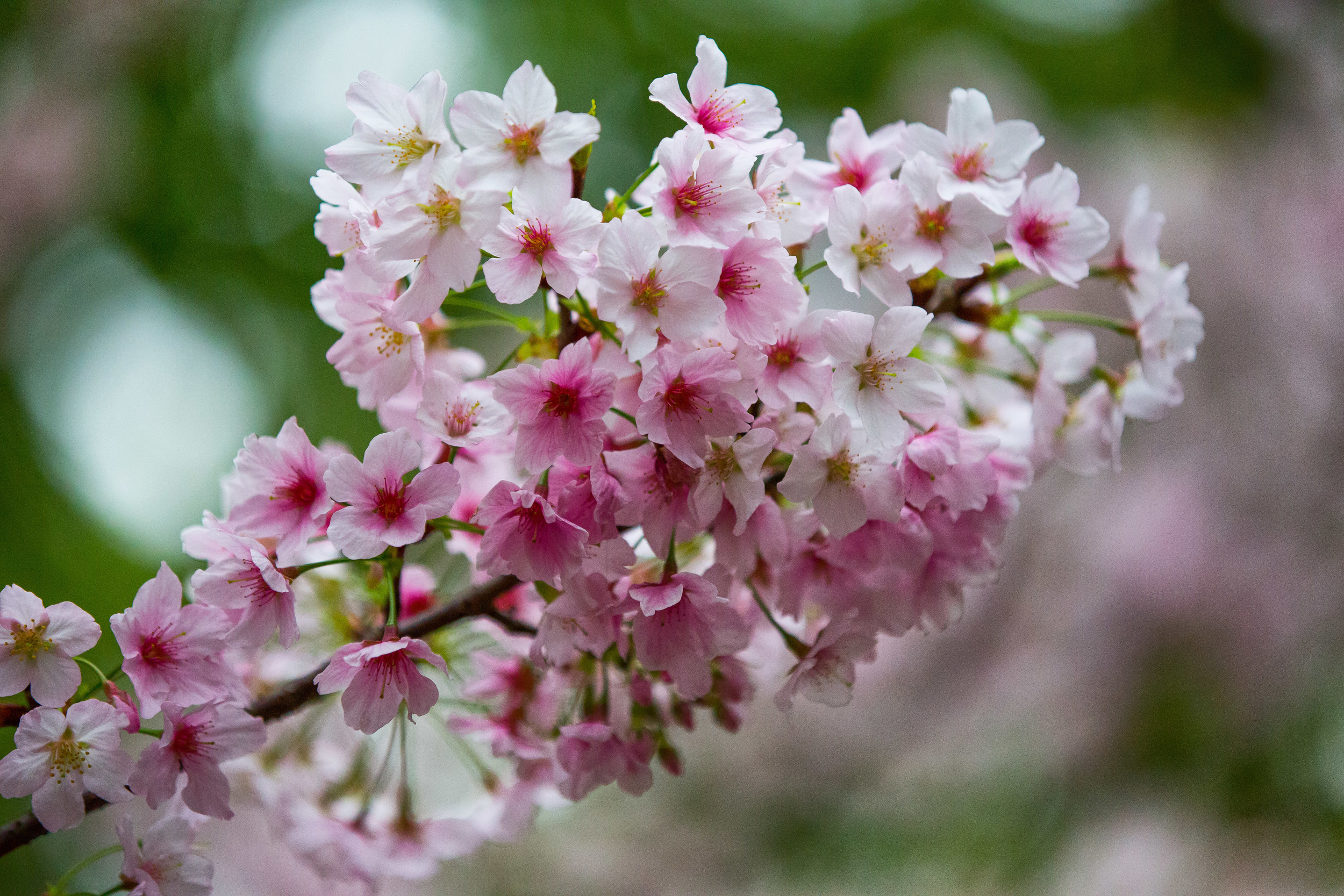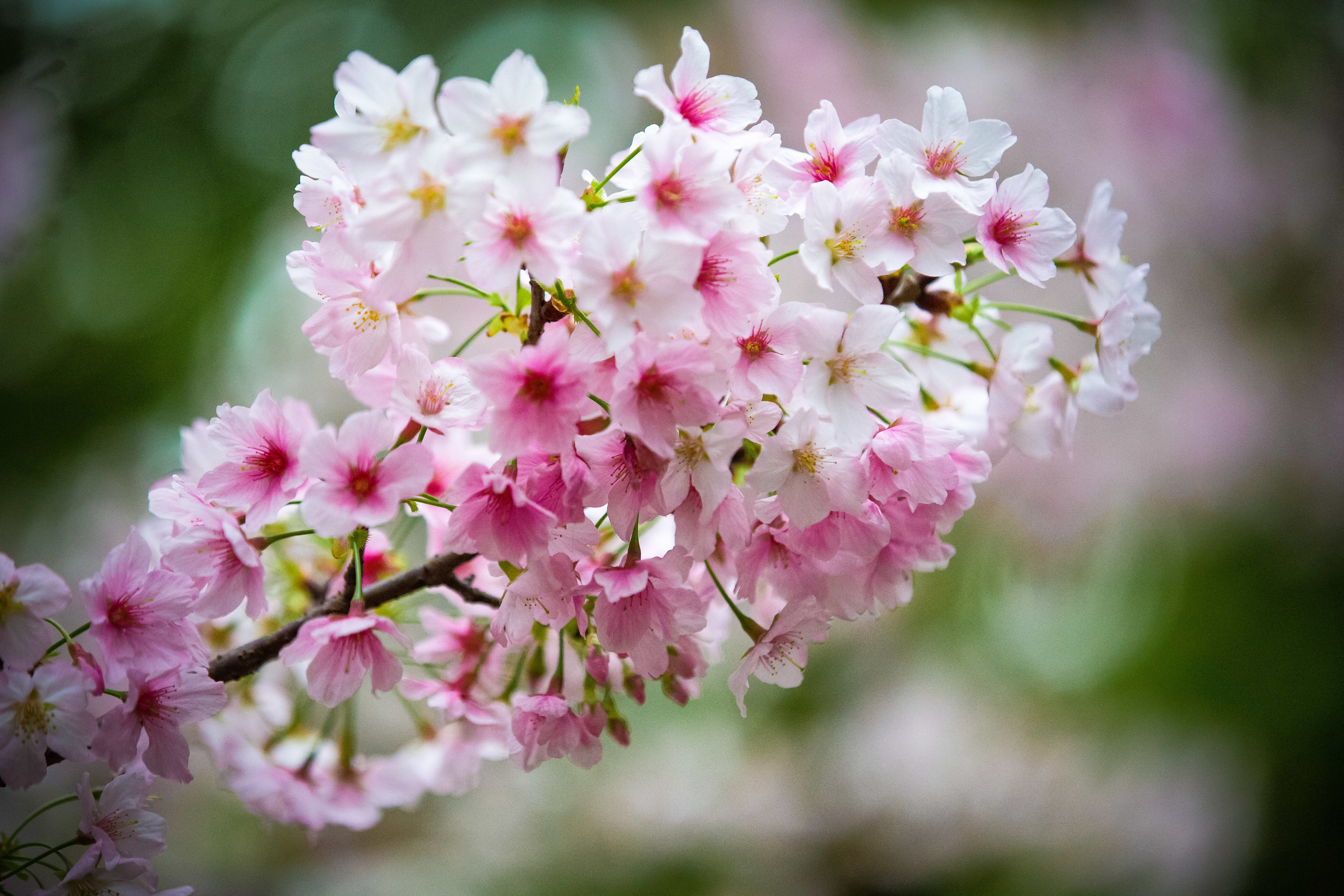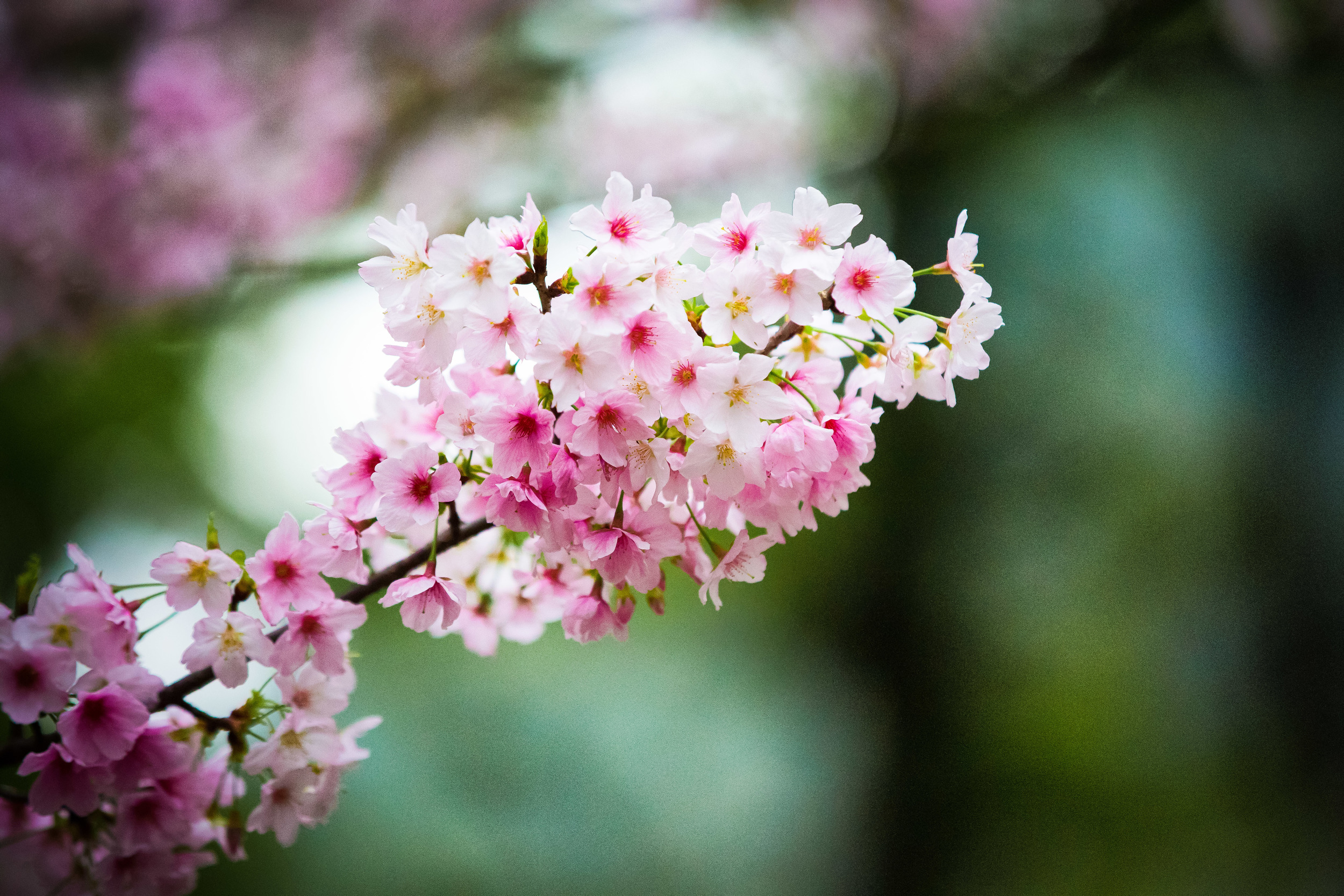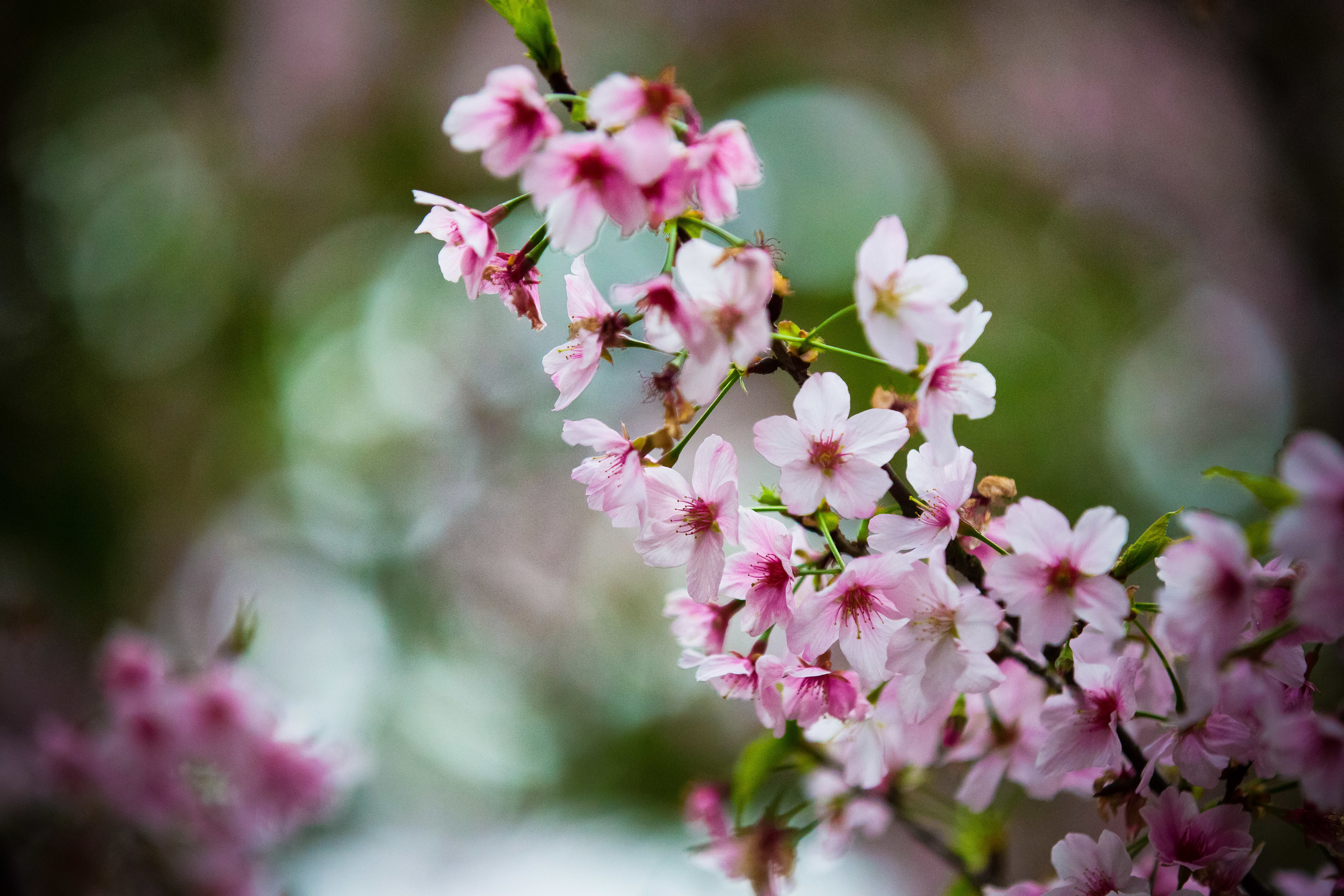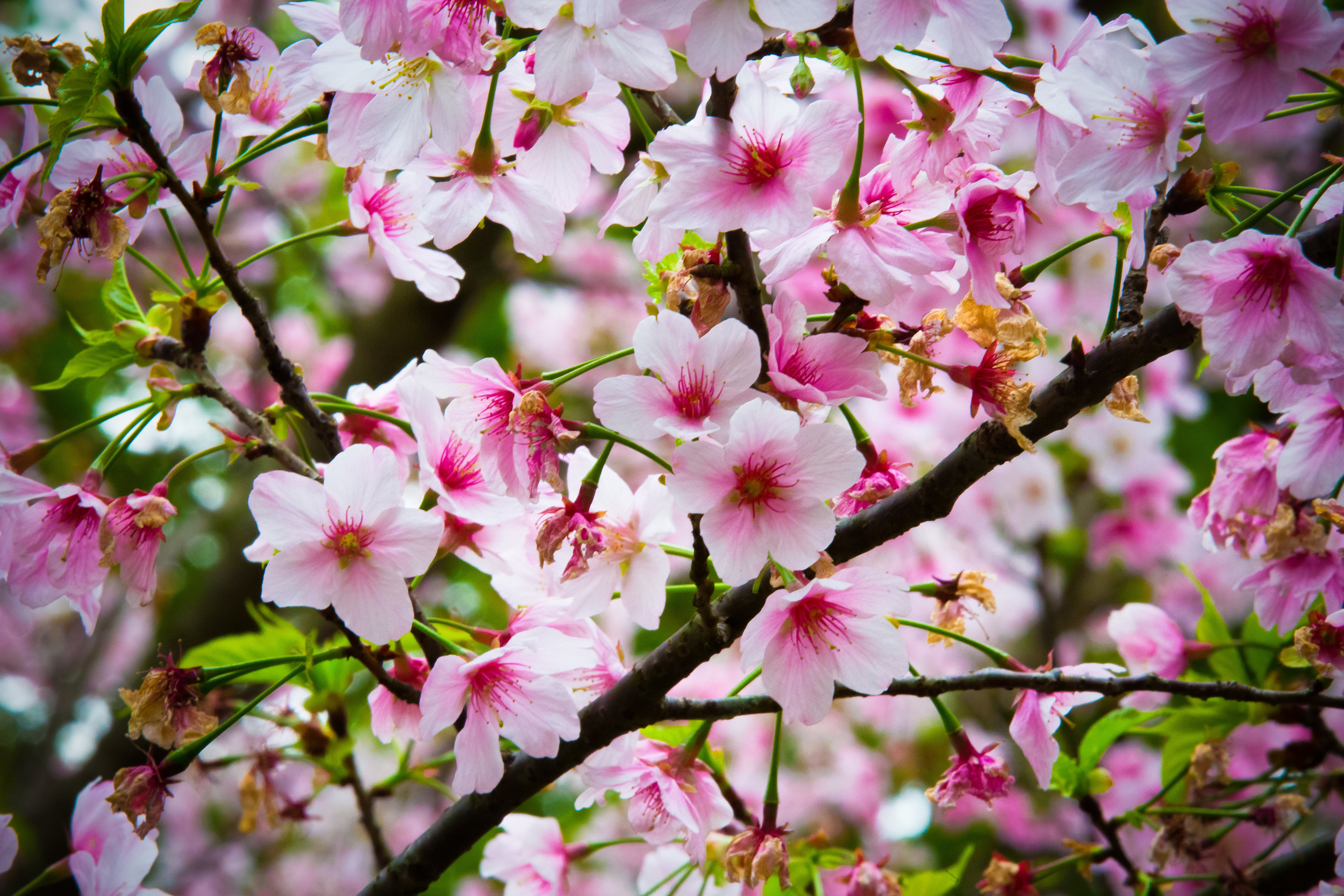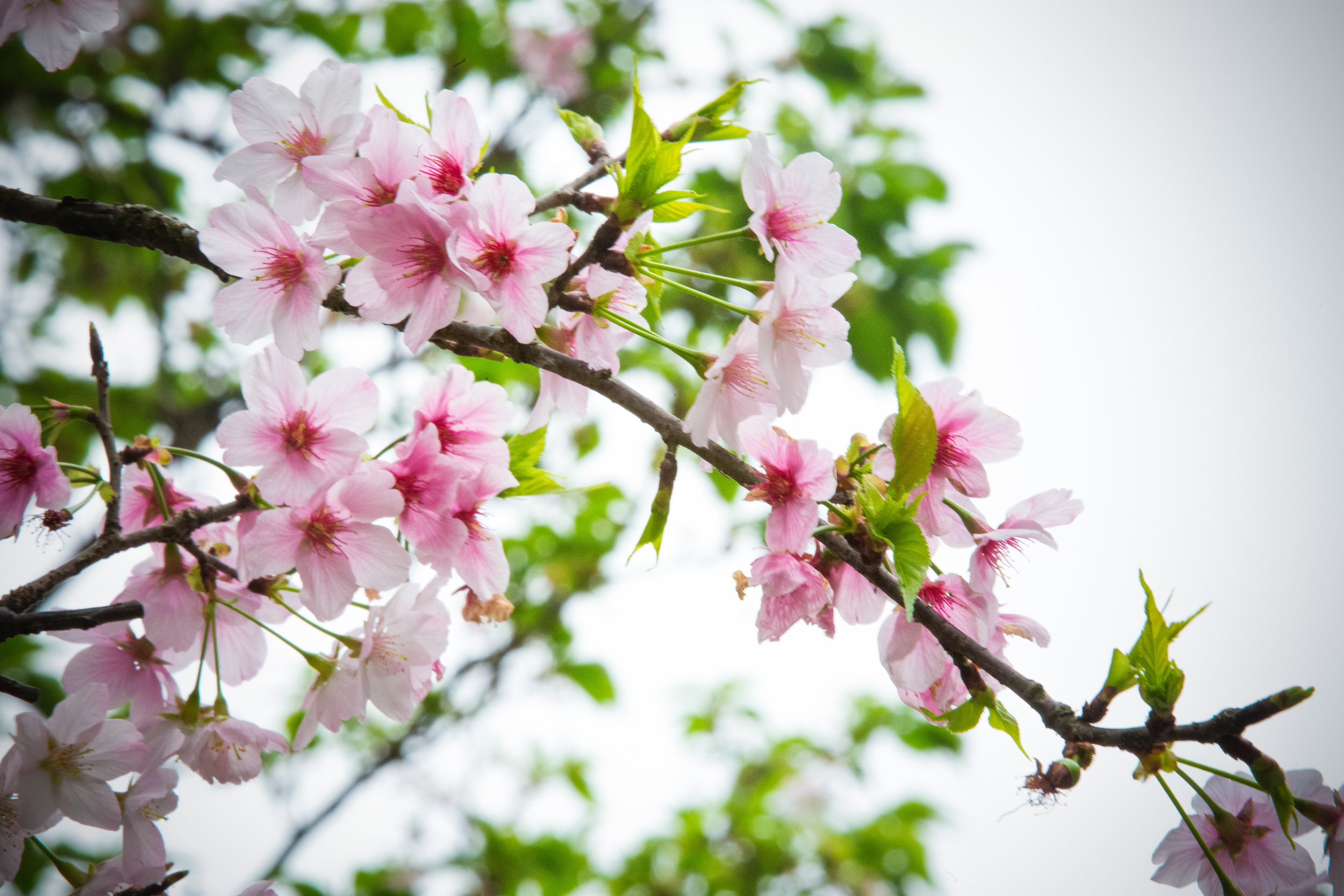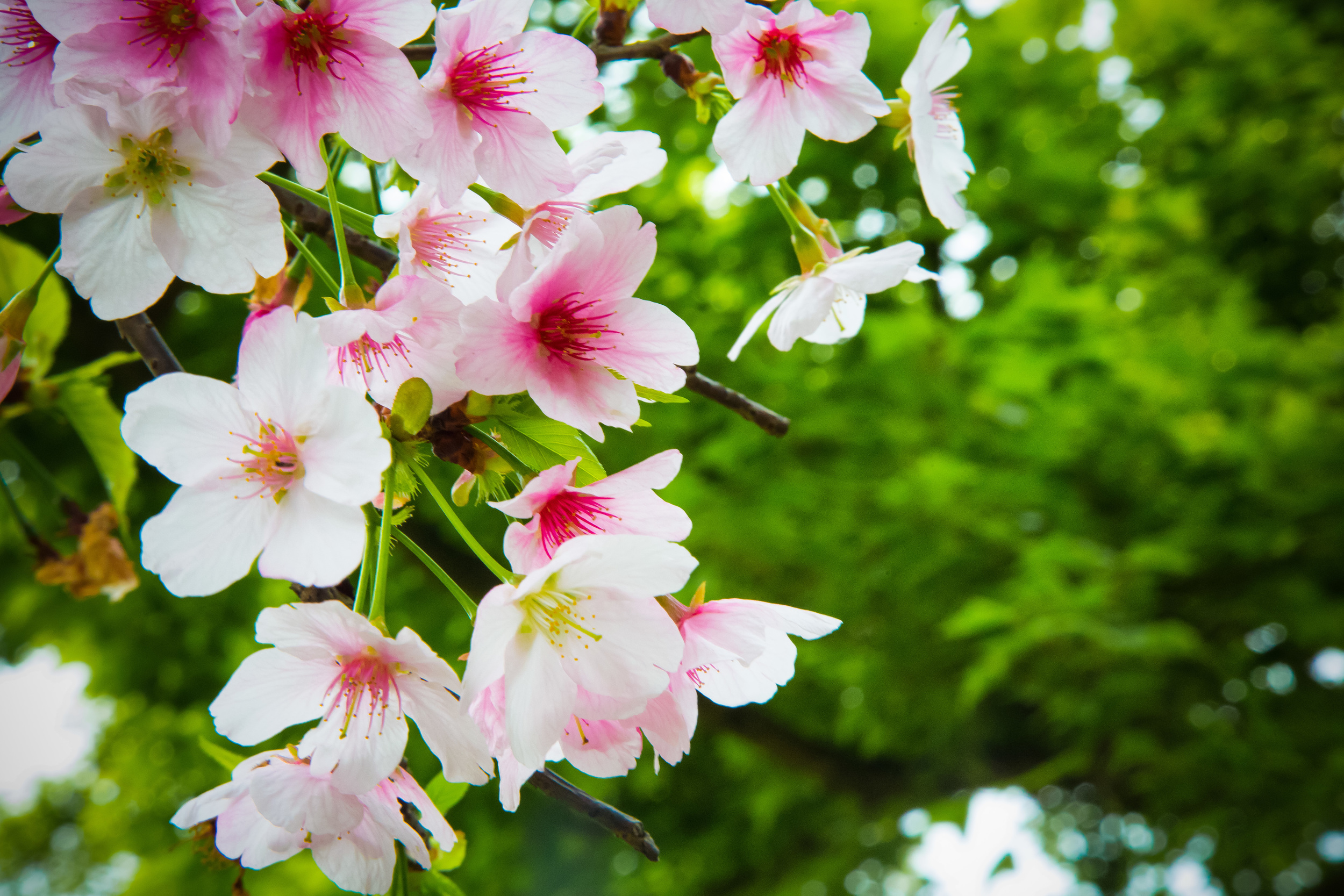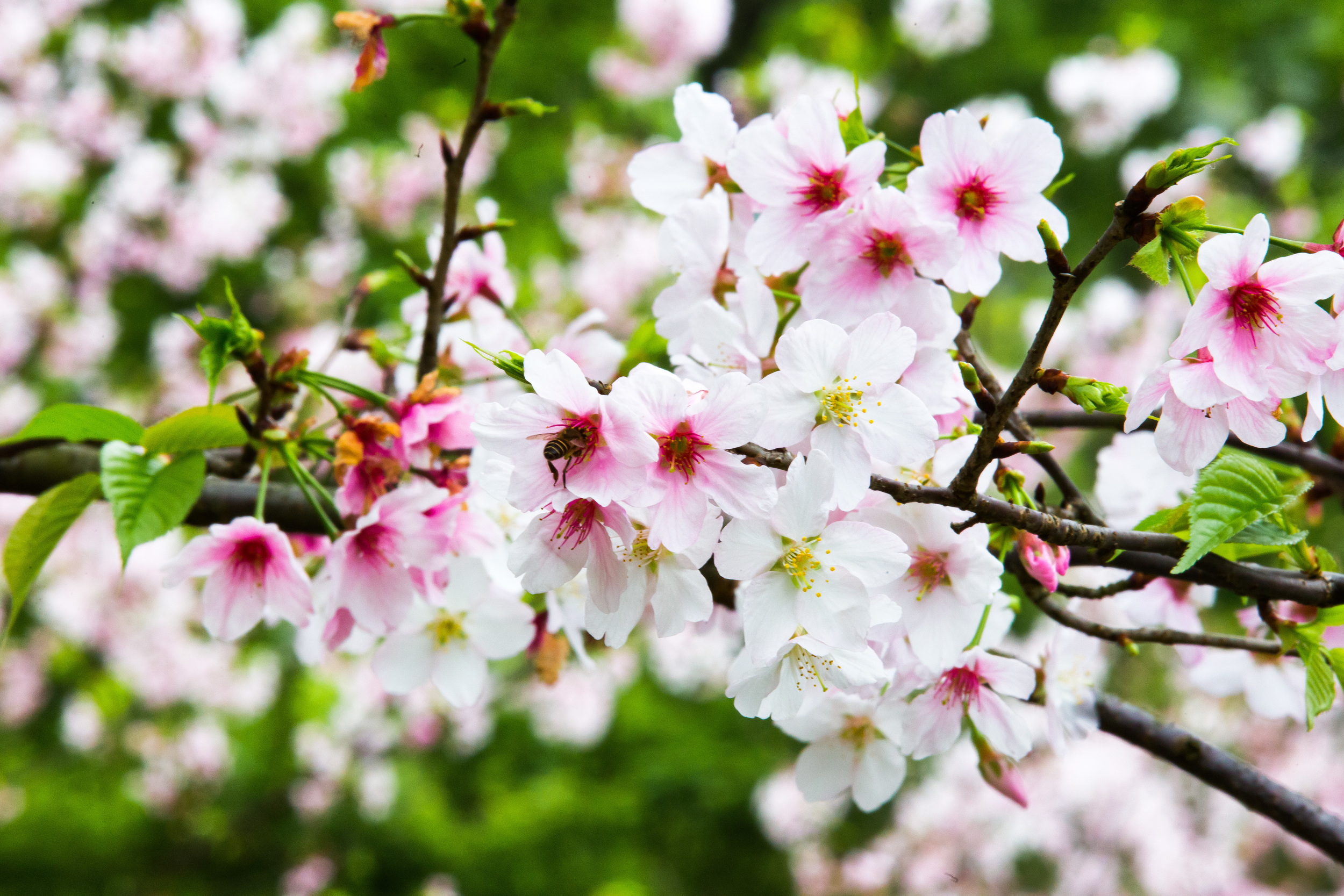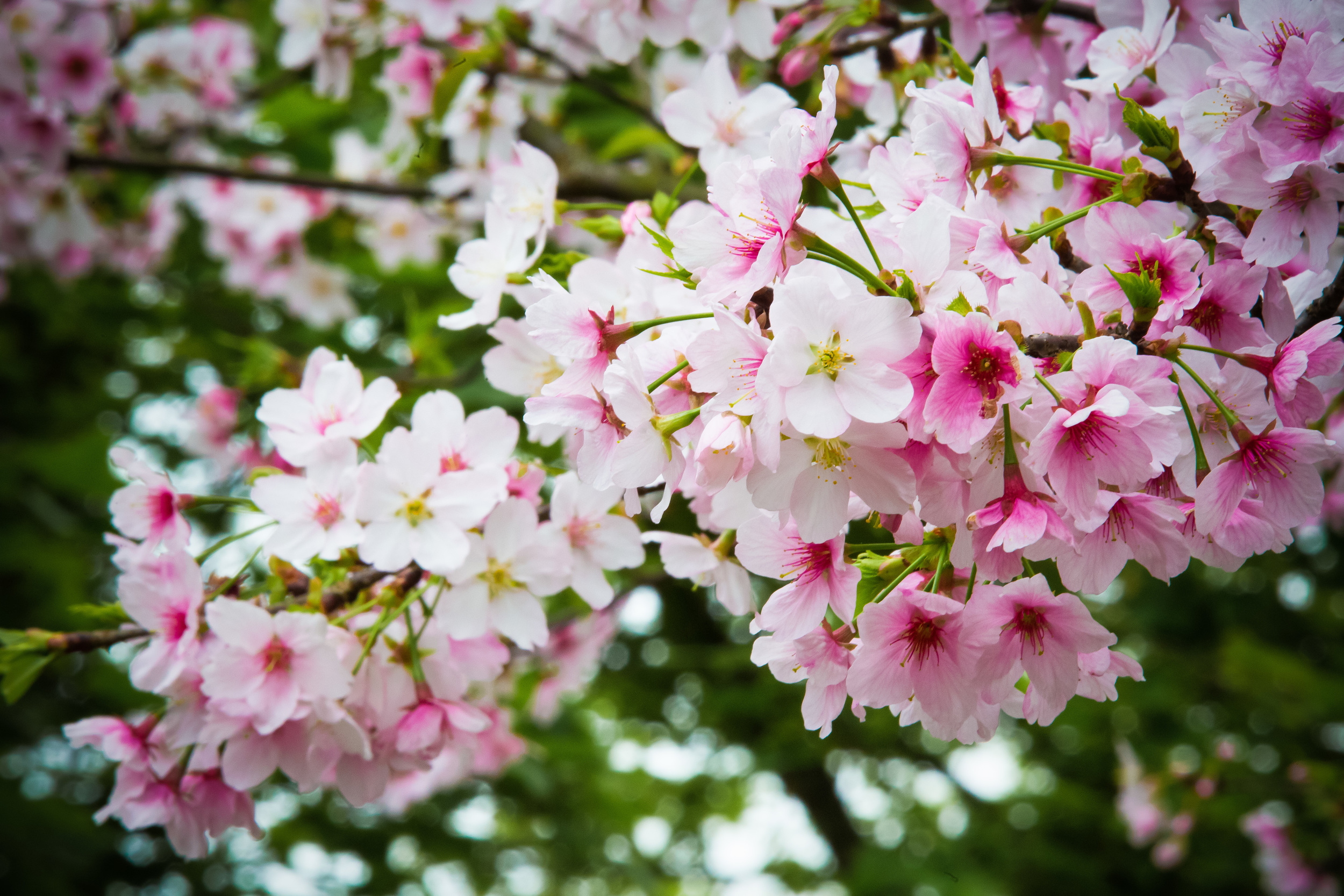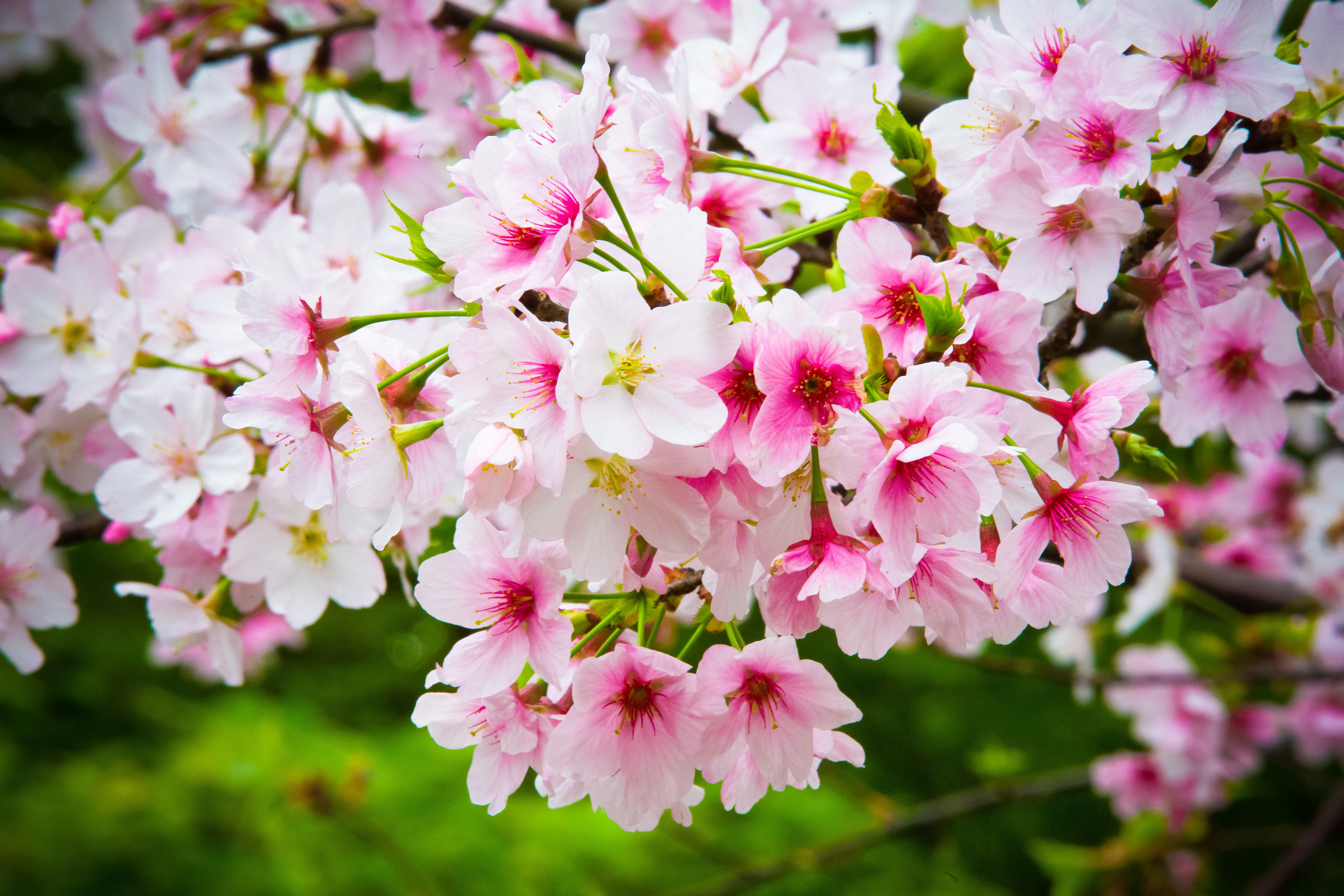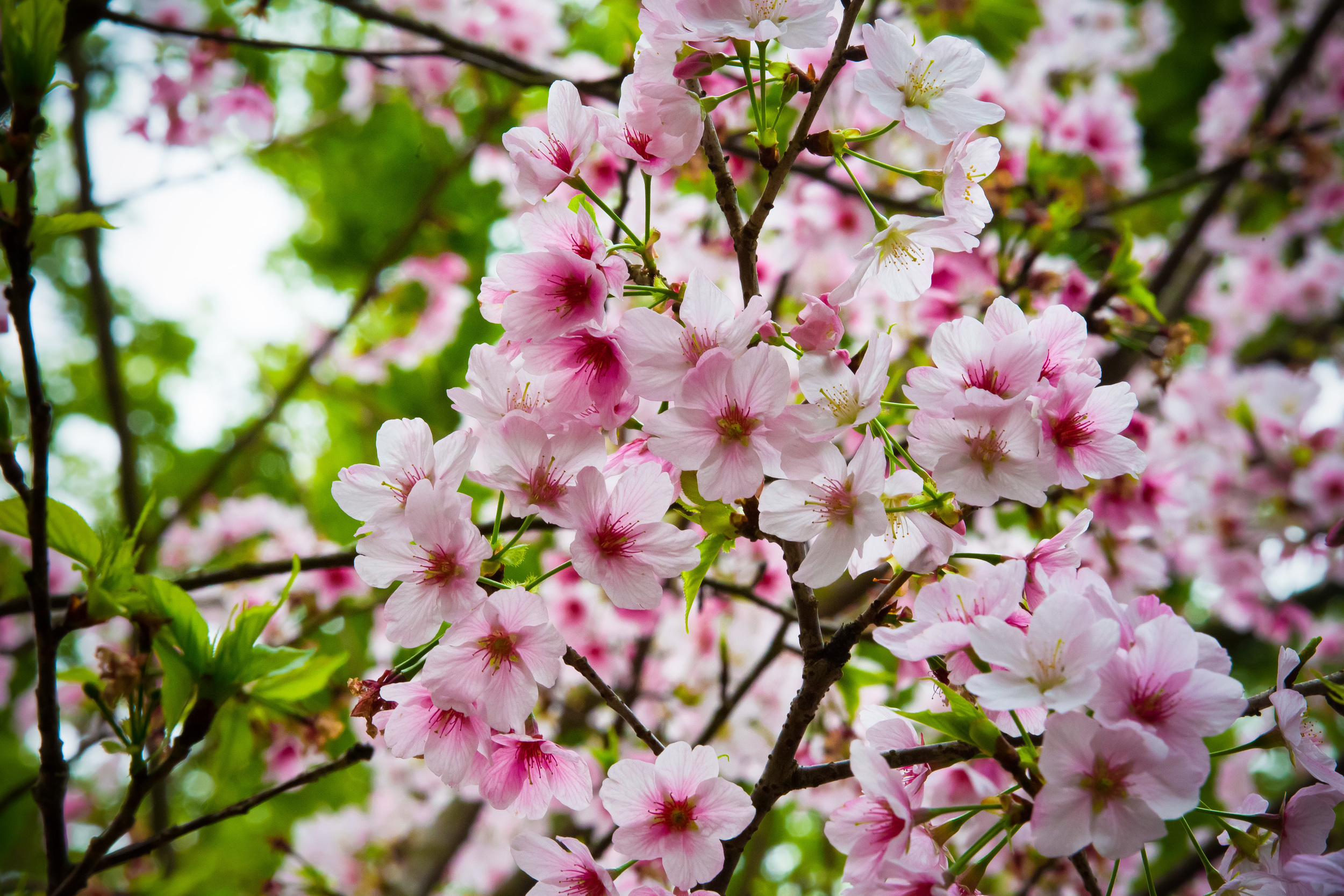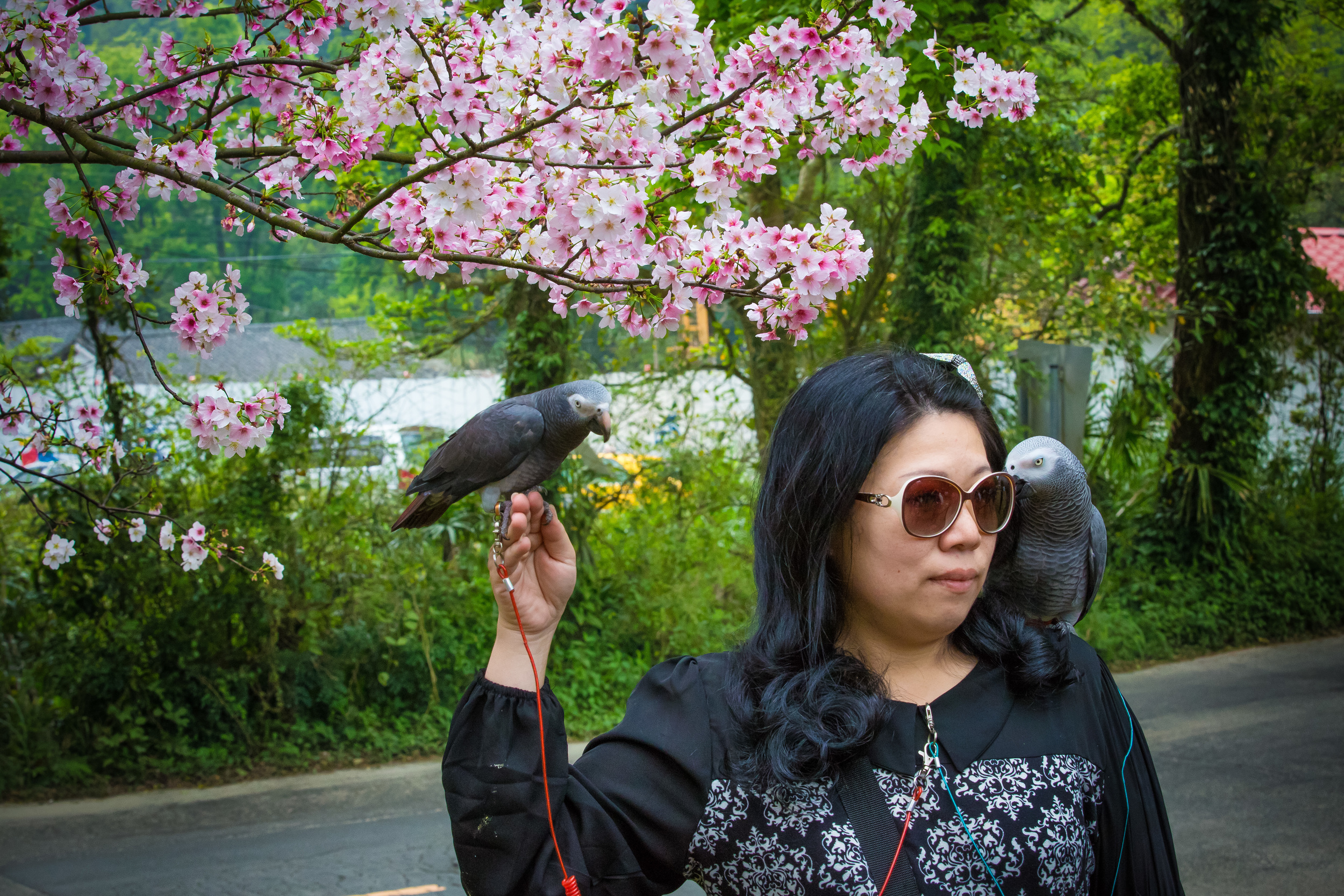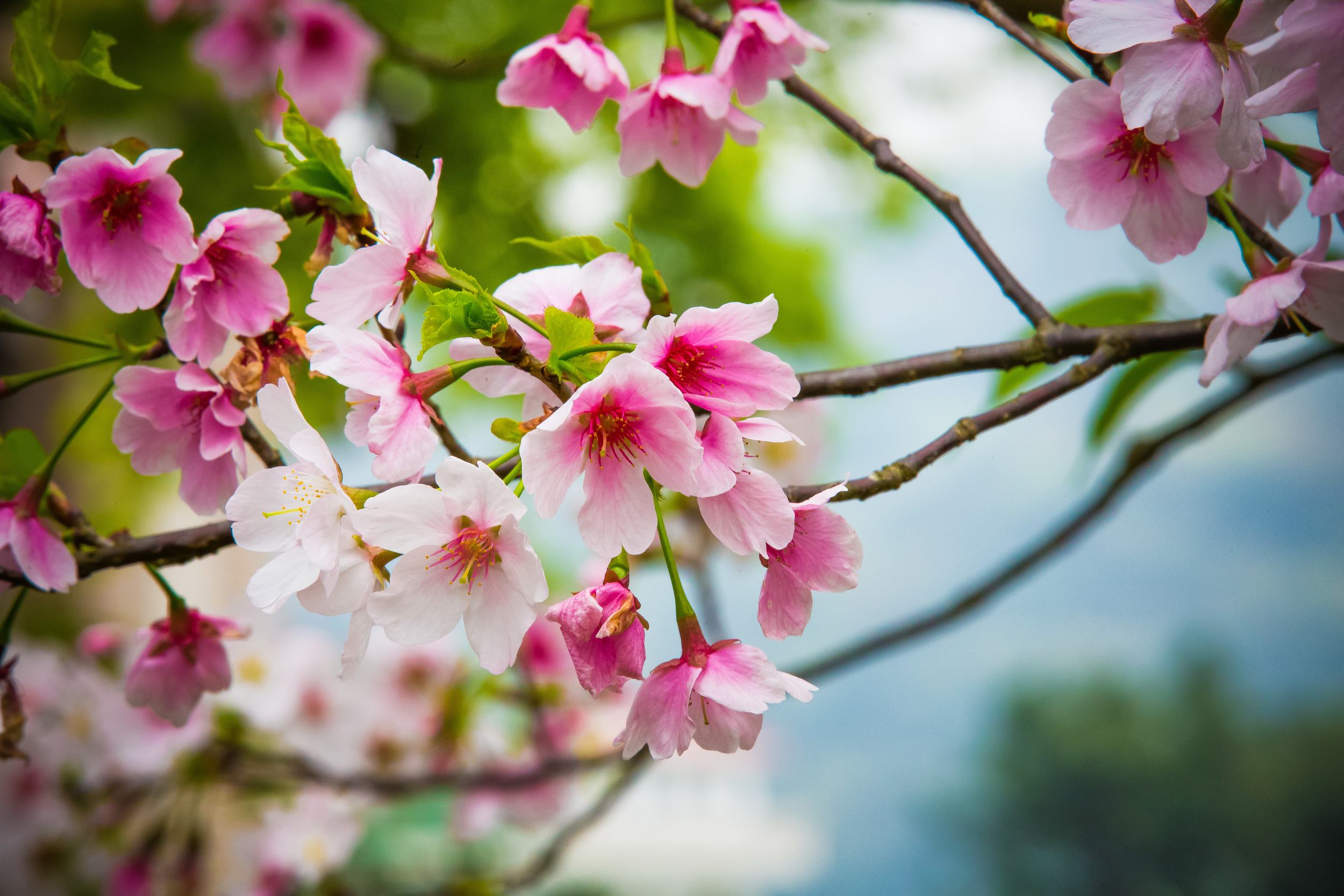It's sakura season here in Taiwan and the blossoms are currently blooming all over the country! In my last post about the Taiwan Cherry Blossoms (山櫻花) I posted about a type of cherry blossom that is endemic to Taiwan. Today I'm going to post about an imported variety of cherry blossom that comes from Japan and is probably the much more popular version.
Taiwan has a few different types of cherry blossoms which bloom between February and April every year - The type of sakura I'm posting about today are known as "Yoshino Cherries" (吉野櫻) and are probably the most well-loved of all the species of cherry blossoms in Taiwan.
During this time of the year, it is normal to see your Taiwanese friends posting photos on social media from Japan where they go to specifically see the blossoms while others visit hot spots like Alishan (阿里山), Yangming Mountain (陽明山), Wuling Farm (武陵農場) and Danshui's Tian-Yuan Temple (天元宮) to see them taking part in a tradition known as "flower viewing" (花見).
As spring rolls around in Taiwan we are lucky to have a few different types of cherry blossoms, but also Peach Blossoms (桃花), Tung Blossoms (油桐花) and Taiwan's national flower the Plum Blossom (梅花) all of which create a lot of tourism for places where the blossoms are growing for this type of flower viewing.
Each type of blossom has a specific purpose - Tung Blossoms are known as "Hakka flowers" and are said to represent Hakka culture while plum blossoms are the "official" flower of Taiwan and it is common to see them depicted on all sorts of government emblems as well as on the New Taiwan Dollar, the currency of Taiwan.
Cherry blossoms on the other hand are important to Taiwan not only because of their beauty but because of Taiwan's close relationship with Japan and Japanese culture. The culture of "Hanami" (花見) which is a traditional Japanese custom of flower viewing and respecting their beauty is an activity that is just as popular in Taiwan with people of all ages as it is in Japan. This is why people travel all around the country and in some cases even travel to Japan to take part in a custom that is shared and widely respected by people in both nations.
There are debates as to the origin of the Yoshino Cherry, but they are believed to have originated in the Yoshino district (吉野郡) of Nara which is where they get their name. The trees are mostly ornamental and are loved for their fragrant light-pink blossoms and the manageable size of the tree.
In Japan, the trees were thought to represent clouds and thus represented the impermanent nature of life, a Buddhist concept known in Japan as "Mono no Aware" (物の哀れ) which is translated as "an empathy towards things." This concept is a reflection of the Japanese people's awareness for the reality of life and how all things, even beautiful things will eventually come to an end.
The trees started to be imported to Taiwan during the Japanese-colonial period between 1895-1945 and from that time on the Japanese appreciation of cherry blossoms was appropriated as part of Taiwan's cultural heritage. Taiwan and Japan share a lot of cultural similarities due to the colonial period and even though that period ended over 70 years ago and isn't looked upon as an entirely positive experience, the people of Taiwan and Japan share a lot of respect for each other and Taiwan's development wouldn't have been so successful if it weren't for Japan's influence.
That appreciation was put on display after the devastating 2011 Tohuku earthquake (東北地方太平洋沖地震) where Taiwan became the country which donated the most amount of money and resources to help those affected by the earthquake and the tsunami that followed. The generosity of the Taiwanese people didn't go unnoticed and as part of their appreciation, Japan took out a full page ad in Taiwan's UDN newspaper thanking the people of the country for their solidarity and generosity during such a devastating experience.
It was fitting that the ad displayed not only the Japanese people's gratitude for their friend and neighbour but also a cherry blossom which displayed the closeness and solidarity of the two cultures.
The sakura shots I'm posting today were all taken on Yangming Mountain in Taipei and I focused on the blossoms rather than landscapes. In technical terms most of the shots were taken with an aperture of f/2.8 meaning that the subject will be in focus while the backgrounds will be blurred causing an effect photographers refer to as "bokeh" and is only really achievable with certain types of lenses.
I thought that as I had posted last year landscape shots of these sakura at Tian-Yuan Temple that this year I would instead focus on the cherry blossoms themselves and let people enjoy the photos in a different way.
If you are in Taiwan or Japan right now, it is the best time of the year to view these blossoms. If you have time make sure to use it to get out and see them. The people at Round Taiwan Round published an excellent guide of where people can see them, so check it out and enjoy one of Taiwan's most beautiful flower seasons!
If you have any questions or comments feel free to comment below or get in touch with me in the contact section below!
Gallery / Flickr (High Res Shots)
